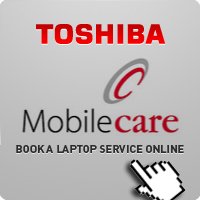The open specification for this innovative technology, named "Bluetooth", is being developed through the combined contributions of the members of the Bluetooth Special Interest Group (SIG). Having identified a growing need for a truly low-cost, ubiquitous wireless link, standardized for global usage, the SIG was formed in early 1998 as a result of the global commitment of the five founding companies. By working together closely, these five companies have combined their individual expertise to create the Bluetooth specification. Ericsson and Nokia are contributing radio technology and mobile handset software, Toshiba and IBM are developing a common specification for integrating Bluetooth technology into mobile devices and Intel is contributing its advanced chip and software expertise.
Bluetooth continues the trend of increasing ease of use
Imagine the Possibilities
We all think in terms of connecting computers to networks. What if we could broaden the scope of connectivity to include mobile PCs, handheld computers and digital cellular phones? What if we could do it all wirelessly, via tiny radios? Imagine the ability to synchronize your handheld computer with your mobile PC—without taking the handheld computer out of your briefcase. Think about automatically receiving e-mail on your mobile PC via the digital cellular phone in your jacket pocket? How would you like to be able to show a presentation at a meeting without connecting cables from a data projector to your mobile PC? What if everyone in the room could view the presentation on their mobile PC, in real-time? Bluetooth will enable these devices to free themselves from wires and work together seamlessly, allowing mobile PCs, phones, handheld computers and other devices to communicate together like never before. Now "wireless" can be truly wireless.
Typical Usage Scenarios
Users will be alerted to, and can respond to, incoming e-mail via their mobile phone, even while their mobile PC remains in its carrying case. When the mobile PC receives an e-mail message, it will send an alert to sound on the mobile phone. It is then possible to browse incoming e-mails immediately, reading the contents on the display of the mobile phone. Users will be able to use a mobile PC to access the Internet via a wireless connection routed through a mobile phone, or a wired connection such as the PSTN or LAN. Users will be able to send an ‘instant postcard’ by cordlessly connecting a camera to a mobile phone. Users can add comments to their snapshots using a mobile PC or mobile phone, and send them instantly to recipients anywhere in the world.
Delivering Innovation
Bluetooth technology aims to make these innovations possible through a small form factor, short-range radio that operates worldwide in the globally available 2.45GHz ISM band and can link devices within a 10 meter radius. Simultaneous voice and data transmission is supported over both half- and full-duplex connections. Bluetooth will enable rapid cable-free access to ad-hoc ubiquitous workgroup connections between devices. Free from line-of-sight restrictions associated with traditional infrared technology, Bluetooth-enabled devices can maintain uninterrupted connections even when in motion or concealed in a pocket or briefcase. Bluetooth will eliminate the need for business travelers to purchase or carry numerous, often proprietary, cables by allowing multiple devices to communicate with each other through a single interface.
Bluetooth Technical Information
Available Worldwide
Bluetooth is specifically designed to provide low-cost, robust, efficient, high capacity voice and data connectivity. The technology is based upon seamless communication between small form-factor, high performance integrated radio transceivers, each allocated a unique 48-bit address, derived from the IEEE 802 standard. Bluetooth devices operate in the unrestricted, globally available 2.45GHz ISM band (available bandwidth varies slightly by location). With a range of 10 meters, extensible up to 100 meters with an optional low-cost external power amplifier, Bluetooth’s 1Mbps symbol rate exploits maximum available channel bandwidth.
Secure Transmissions
Bluetooth’s fast frequency-hopping (1600 hops/second), packet-switched protocol enables high performance in noisy radio environments. Furthermore, Bluetooth’s adaptive output power minimizes interference, and short data packets maximize throughput during interference. Combined, these features enable Bluetooth to provide extremely flexible and fast connections, even in the presence of severe interference. As the interference increases, the performance degradation remains minimal and gradual, enabling stable links to be maintained. Additionally, Bluetooth technology boasts robust data encryption and authentication capabilities.
Low Power
Low power consumption, drawing only 0.3mA in standby mode, enables maximum battery life for mobile devices (during data transfer, maximum current drain is 30mA—during pauses or at lower data rates, the drain will be lower). Fast acknowledgement allows low coding overhead and CVSD (Continuous Variable Slope Delta Modulation) voice coding enables operation at high bit-error rates. Flexible packet types support a wide range of applications and Bluetooth’s relaxed link budget supports low-cost single chip integration. A miniaturized form factor and multi-chip module packing makes Bluetooth technology suitable for even the most portable devices.
Open, royalty-free, specification for widespread industry adoption
For More Information, Visit the Bluetooth Web Site
Bluetooth technology adoption is expected to be widespread throughout the computer and telecommunications industry. Implementation of the Bluetooth technology is expected to grow the market for personal mobile devices and increase airtime usage for mobile data. Manufacturers will also benefit from the ability to replace multiple connection ports with a single Bluetooth module, gaining economies at the production level. The group has defined favorable adoption terms, including open, royalty-free availability of the specification. To promote open access to Bluetooth technology and communicate news about its development in the future, visit the Bluetooth website
Bulletin
Bulletin


